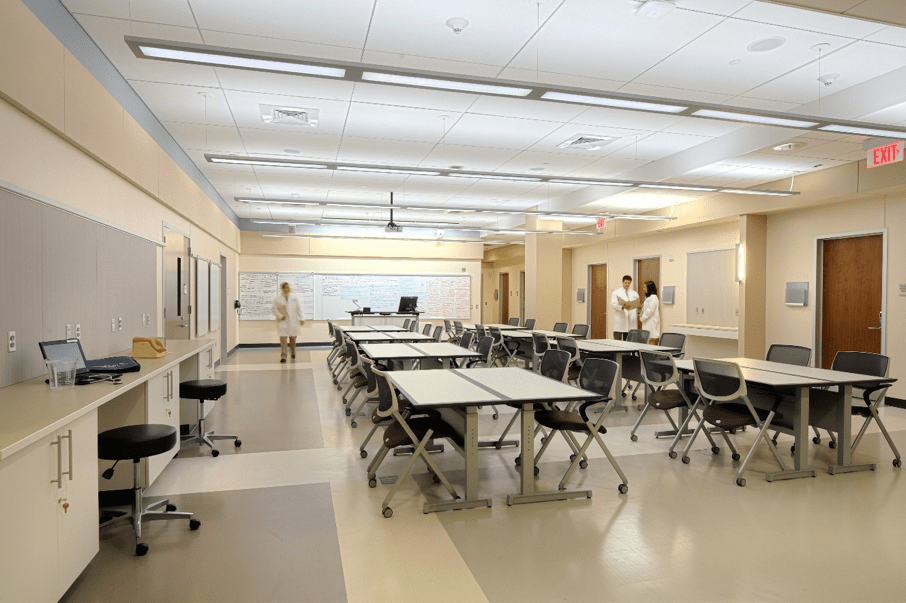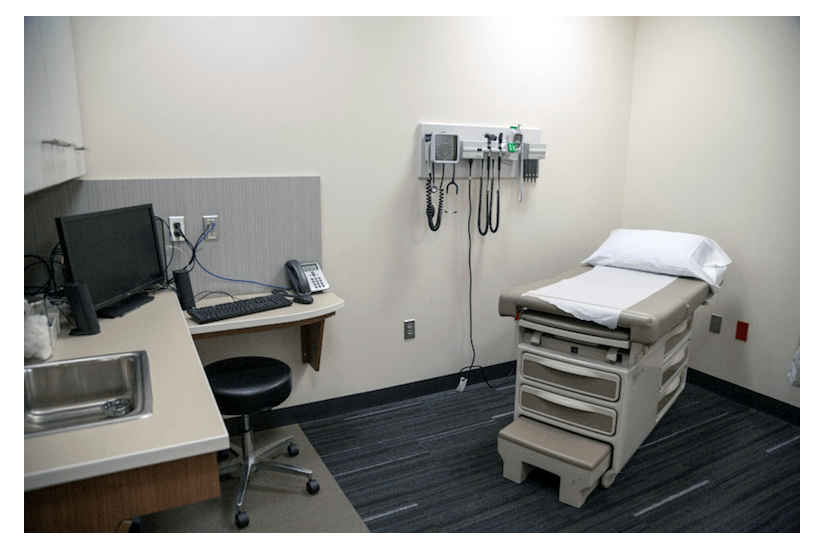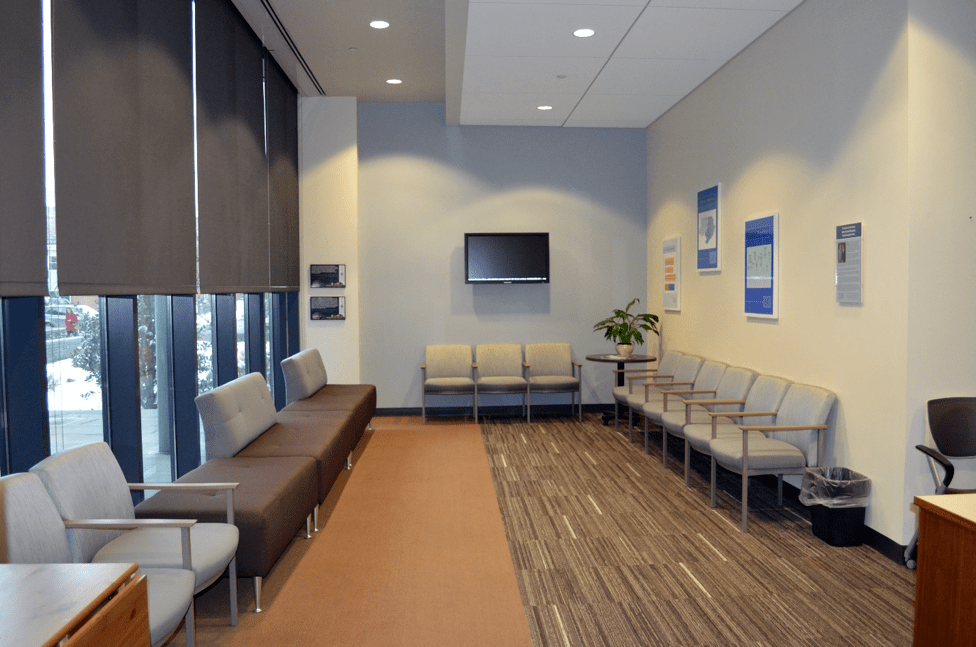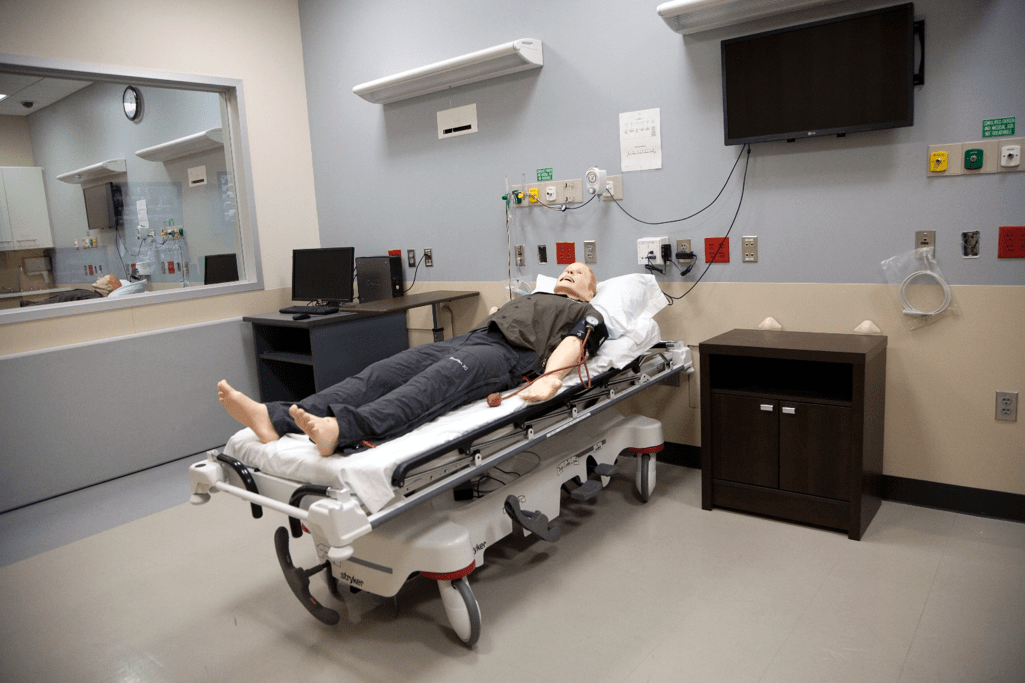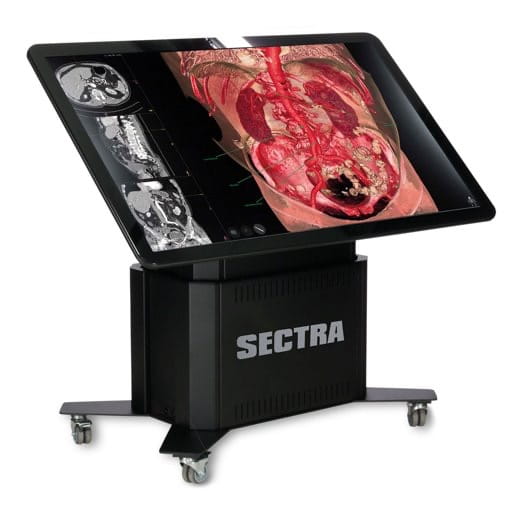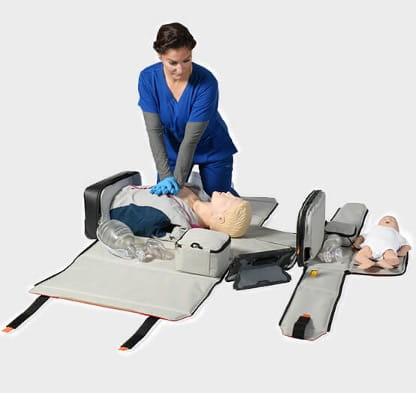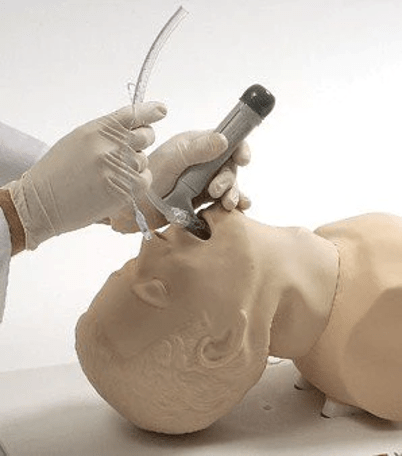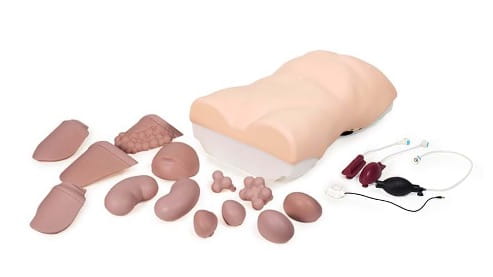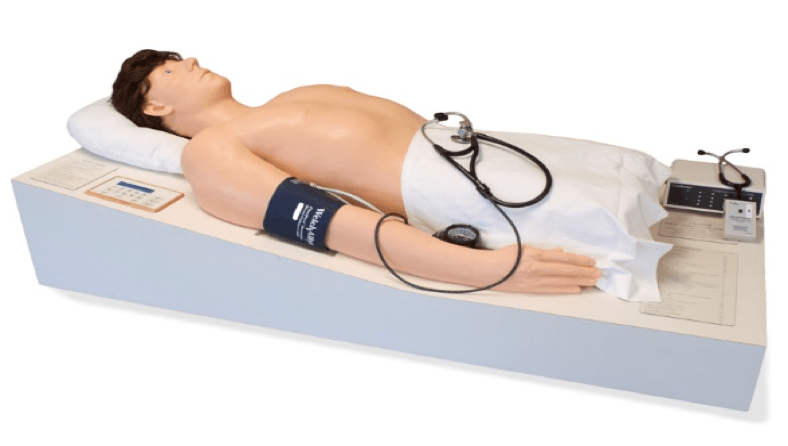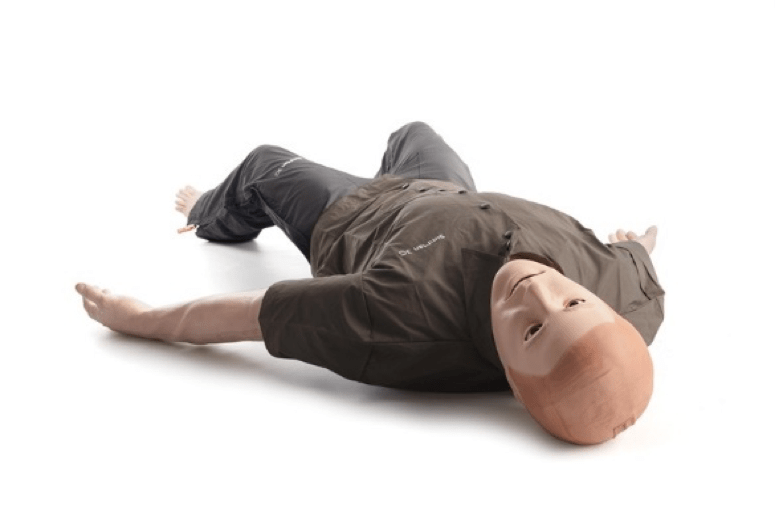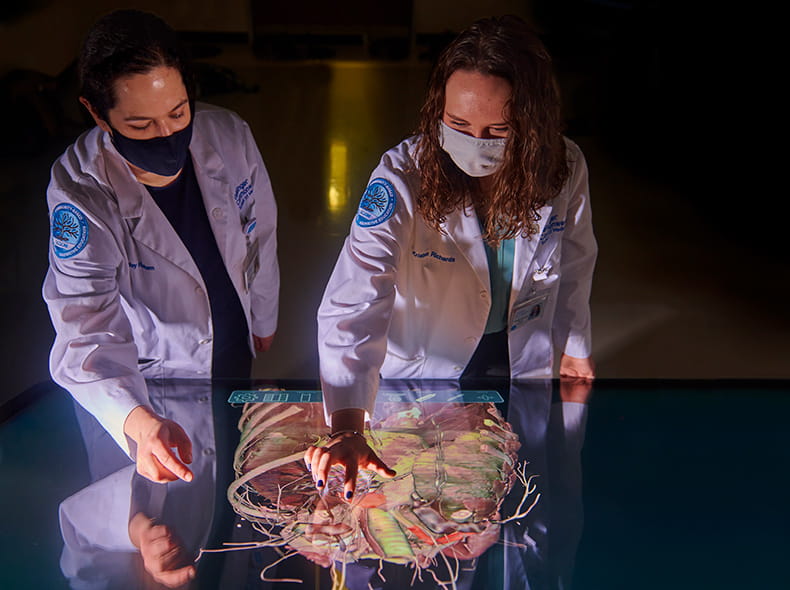
The Clinical Skills & Simulation Center at GCSOM
Hone your skills through hands-on training
Clinical Skills & Simulation Center
The role of the Clinical Skills and Simulation Center (CSSC) at Geisinger Commonwealth School of Medicine is primarily to support the simulation-based teaching and assessment of clinical skills across the four years of the Doctor of Medicine (MD) curriculum. It also uses high-fidelity simulation to help first- and second-year MD students understand the clinical relevance of the basic sciences, to collaborate with regional colleges and universities in interprofessional education and to teach the basics of patient safety.
Facilities
Geisinger Commonwealth School of Medicine’s Clinical Skills and Simulation Center is a 10,039-square-foot space located in the Medical Science Building in Scranton, Pa.
It’s home to:
- 12 exam rooms equipped as a primary care office including a desktop computer and audio-visual (A/V) equipment for recording student activities and assessments
- 32-seat classroom with fully integrated AV equipment
- Family-centered care bay
- Six simulation bays with AV equipment for recording student activities and assessments
- Control room using Education Management Solutions (EMS) monitoring system for real-time and recorded observation
- 20-person patient reception room (David and Ann Hawk Patient Reception Room)
- Sectra Tables and Sectra Education Portal
- Provides advanced visualization tools and multidisciplinary library of real anatomy and clinical cases designed to augment anatomy curriculum
- Cases can be used in integrated courses for both traditional and remote teaching.
- Ties in anatomy, histopathology, radiology, trauma, orthopaedics, oncology, surgery and other specialties.
Equipment
Capabilities include:
- Airway: Orotracheal/nasotracheal intubation, cricothyrotomy, tongue edema, decreased cervical range of motion and laryngospasm
- Pulmonary: Normal and adventitious lung sounds, pneumothorax, variable lung compliance
- Cardiac: Extensive ECG library, palpable peripheral and central pulses, normal and adventitious heart sounds, live defibrillation, pacing and cardioversion
- Access: Right arm IV, tibial and sternal IO
- Other: Blinks, bleeds, normal and adventitious bowel sounds, urinary catheterization
The Clinical Skills & Simulation Center houses a number of task trainers, simulators & diagnostic tools.
- (4) SimMan® 3G
- (2) Harvey, the cardiopulmonary patient simulators
- (6) SECTRA tables for anatomy lab practice
- (5) Adult and infant CPR manikins
- (2) Ultrasound machines
- (4) Abdominal trainers
- (6) Female pelvic trainers
- (4) Male pelvic trainers
- (3) Testicular examination models
- (5) Rectal examination trainers
- (2) Adult male catheterization trainers
- (2) Adult female catheterization trainers
- (2) Male/female pediatric catheterization trainers
- (3) Adult intubation trainers
- (2) Infant intubation trainers
- (3) Advanced venipuncture arm trainers
- (6) Breast examination trainers
- (6) Eye examination trainers
- (4) Ear examination trainers
- (2) Birthing model simulators
- (3) Adult lumbar puncture trainers
- Pediatric lumbar puncture trainers
- Advanced care pediatric trainers
- Nita newborn vascular access trainer
- Various supplies and equipment that complement the above items
Much of this equipment is available to students. To reserve equipment, email the CSSC staff at simcenter@geisinger.edu with your request. We’ll set up a date and time to pick up and sign for the equipment. You can reserve equipment for up to 10 business days before it must be returned to the CSSC. Anyone with overdue items will receive a reminder to return them. You are responsible for the cost of any equipment that’s damaged or not returned.
The following equipment is available for sign-out and may leave the clinical skills & simulation center for extended use:
- Blood pressure cuffs
- Otoscope/ophthalmoscope diagnostic kits
- Suture boards
- Reflex hammers
- Tuning forks
The following equipment is available for sign-out but must remain in the clinical skills & simulation center:
- Harvey, the cardiopulmonary patient simulator
- SECTRA tables
- Ultrasound machines
- Abdominal trainers
- Adult and infant CPR trainers
- Male and female pelvic trainers
- Male, female and pediatric catheter trainers
- Testicular examination models
- Rectal examination trainers
- Adult and pediatric lumbar puncture trainers
- Adult and infant intubation trainers
- Advanced venipuncture arm trainers
- Breast examination trainers
- Eye examination trainers
- Ear examination trainers
- Birthing model simulators
- Pediatric trainers
The following equipment requires a trained operator and isn’t available for after-hours reservation:
- SimMan® 3G
- Catheter trainers
- Advanced venipuncture arm trainers
Disposable equipment is available for clinical skills sessions, simulations or assessments and isn’t available outside of curriculum.
Examples include:
- Alcohol preps
- V catheters
- Tongue blades
- Cotton balls
- Thermometer covers
- Otoscope speculum
- Paper drapes
- Exam gowns
- Cotton-tipped applicators
- Gloves
- Tape
- Gauze
- Vaginal speculum
- Sutures


